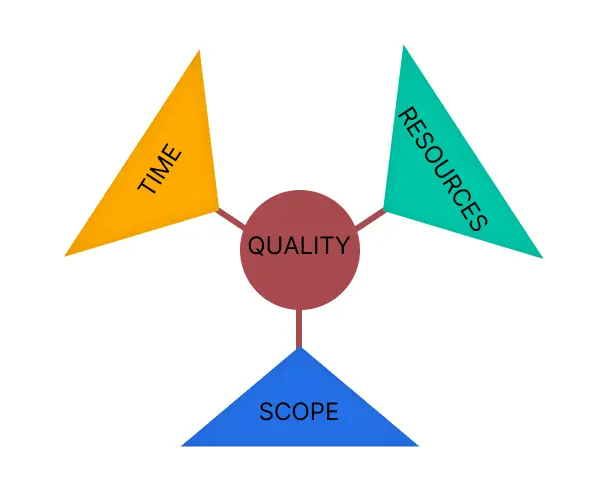Breaking Down the Factors that Affect Development Costs

Are you planning to develop a new software or application but want to know the costs? Well, you're not alone. Developing a software application can be a complex and costly process. Many factors can impact development costs, from people to technology to design to many factors. This article will discuss the key factors affecting development costs and explore how each can impact your project. By understanding these factors, you can better manage your development costs and bring your project to success. So, let's dive in and explore the world of software development costs!
Table of Contents
- Table of Contents
- How much does it cost to develop an app?
- The impact of project management on development costs
- The importance of ongoing maintenance and support in development cost management
- The importance of outsourcing on development costs
- Conclusion
How much does it cost to develop an app?
Budgeting is everything! But without knowing what you want, this question is as vague as asking how much your dinner will cost. The answer depends on whether you want to eat plain rice or beluga caviar with many elaborations. The ingredients are meaningful, but the context is also crucial.
How can we even start the project without knowing the cost estimate? Let's move into some examples with numbers for a better picture.
An MVP (Minimum Viable Product) for a dating app like Tinder could easily cost more than $100,000, assuming six months of work, including project management, planning, design, development, and quality assurance. This MVP could be released within seven months.
We know that Tinder has an app for Android and iOS that uses different technologies and source codes, together with the landing page, which will also be different. Its functionality includes registration, login, authentication mechanism, user profile, photo swiping, real-time messaging, and push notifications. Tinder did not have payments on the MVP version.
A summary of the expensive features of a project could be related to integrations like payments, user authentication, booking flow, and real-time processes.
Finally, management will want an admin panel with metrics and user administration. Of course, the tech team will need tooling for managing a live app and possibly working on potential incidents - everything could be better in this world, and development is not a one-off effort!
Note that this MVP is only for going live and testing the app, I assure you it will have bugs (errors in the development world). Also, nowadays, we can outsource many tools. We have based the project on a simplified scenario and only consider the technology side, not marketing, human resources, etc. We have only seen the tip of the iceberg — it’s time to dive deeper into more detail.
The impact of project management on development costs
The complexity of a project can have a significant impact on development costs. More complex projects require more time and resources, thus increasing costs.
Triple constraint
The triple constraint in project management is the relationship between three essential factors: scope, time, and resources. Think of them like three legs of a stool - if you change one, it affects the stability of the whole thing. For example, if you want to implement more features into the project (scope), it will either take longer (time) or result in increased cost (resources).
Project managers use the triple constraint to balance these factors and ensure they meet the project's goals. Based on those factors, they must make decisions and trade-offs to ensure the project is completed successfully, on time, and within budget.

- How many features would you like to have?
- How much customization are you looking to have?
Having precise project requirements is essential for managing development costs. Development teams may spend more time and resources trying to understand what is needed otherwise, which can drive up costs. Precise requirements also help ensure the final product meets the client's needs, reducing the risk of costly rework.
- Remember what is in vs. out
- Keep in mind the triple constraint and focus on quality
- You will continually be revisiting the scope of the project with everyone involved
- Have a written scope that all the stakeholders understand
- Focus on what you will be delivering and the value created
- A broader scope will require more time and/or resources to keep the same quality
Cost of a change vs. ability to make a change over time

It is far better to take the time up-front to verify the scope and direction with your project stakeholders. Requesting a last-minute change can be costly or sometimes even impossible.
Balancing the triple constraint to adapt your budget could optimize your product launching process.
ALWAYS ensure the final product meets the quality standards to reduce the risk of expensive support and maintenance issues once the product goes live.
Reducing time and/or resources without revising the scope will compromise quality.
The importance of ongoing maintenance and support in development cost management
An app or website is not done when you release it to live, and we can even say that going live is only the beginning of the journey. Without regular updates and bug fixings, apps and websites will become outdated, leading to security vulnerabilities and decreased user engagement. By investing in ongoing maintenance and support, you can ensure that your software remains up-to-date and is functioning correctly, which can ultimately save money by reducing the need for significant updates or overhauls further down the line.
Additionally, providing reliable support to users can help avoid complaints, improve customer satisfaction, increase loyalty, and create more stable revenue over time.
The importance of outsourcing on development costs
Having your development team is fantastic, but it comes with costs to manage. Outsourcing software development comes in handy on many occasions. It can help optimize costs and reduce risks in several ways.
Leveraging on some existing functionalities, such as logging, monitoring, and analytics, instead of building them from scratch will save on time and cost without sacrificing quality. Access to talent on demand, specialized expertise, and allocation according to budget and timeline can also help develop high-quality software more efficiently and quickly.
Outsourcing helps businesses scale development resources up or down as needed without incurring overhead costs.
Remember that outsourcing is not only about talent. It’s also tools and software. Reinventing the wheel is expensive.
Conclusion
Congratulations, you've made it to the end of our journey through the complex and often confusing world of software development costs! While it may not be as exciting as a roller coaster ride, it's essential to understand the key factors that can impact your project's success and, of course, your wallet.
As we've seen, the complexity of a project, timeline requirements, team size and composition, testing, and compliance requirements can all impact development costs. But fear not, my tech-savvy friends! By understanding these factors and taking appropriate steps like outsourcing and investing in ongoing maintenance and support, you can better manage your development costs and set your project up for success.
So the next time someone asks, "How much does it cost to develop an app?" You can confidently respond: "It depends on many factors, but I can explain what to consider." And with your newfound knowledge, you may have enough left in the budget to treat yourself to some beluga caviar.
Bon appétit!
Please do not hesitate to book a consulting session with us here. We would love to hear your business idea and help you realize it!
Brisa public release: Why do we want to use Brisa?
Brisa is a modern web framework that simplifies the complexity of SSR with a focus on web-components. It clearly defines server and client data flows using the power of signals. With minimal overhead and a straightforward structure, Brisa has a minimal learning curve, high efficiency, and a clear approach to data management.
Zenet Technology Onboards Brisa: A New Era of Web Development
Zenet Technology has integrated the innovative "Brisa" framework into our website, developed by @aralroca. Launching in September 2024, Brisa combines the best features from leading technologies to offer a lightning-fast, versatile framework for web development. Stay tuned for more updates and follow @zenettechnology @aralroca for the latest news.

Navigating the Digital Nomad Life: Weighing Cloud Nine Against Stormy Skies
Embracing the digital nomad trend, businesses today face the intricate task of blending remote work culture into their operational fabric. This shift demands reimagined leadership, enhanced cybersecurity, and a mutual pledge for flexibility and accountability between employers and employees. As companies navigate this terrain, the journey toward a hybrid work environment unfolds, marked by collective wisdom and innovation. Would you be ready to make the transition smoother? Zenet Technology is your go-to partner for seamlessly shifting to this new frontier.

